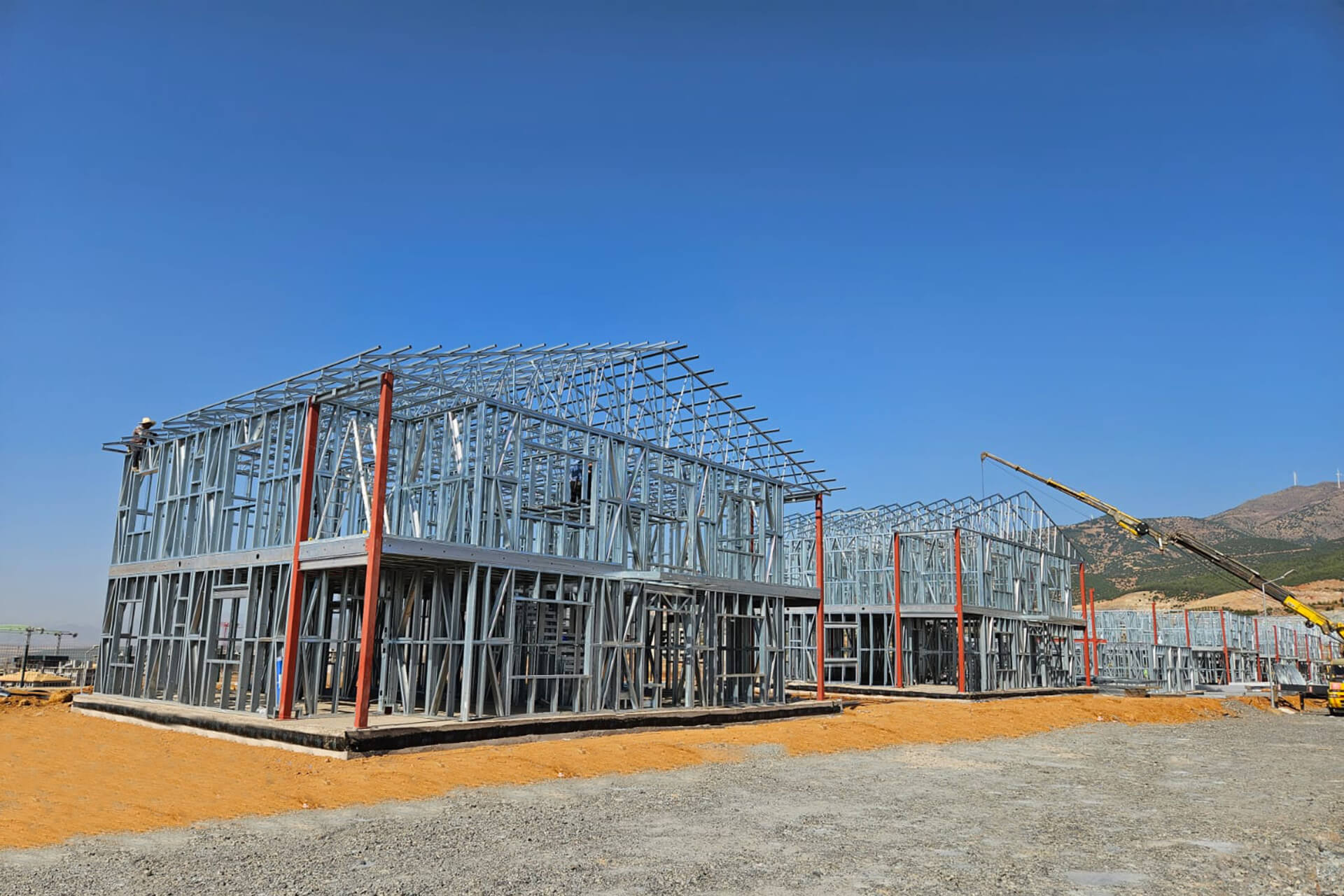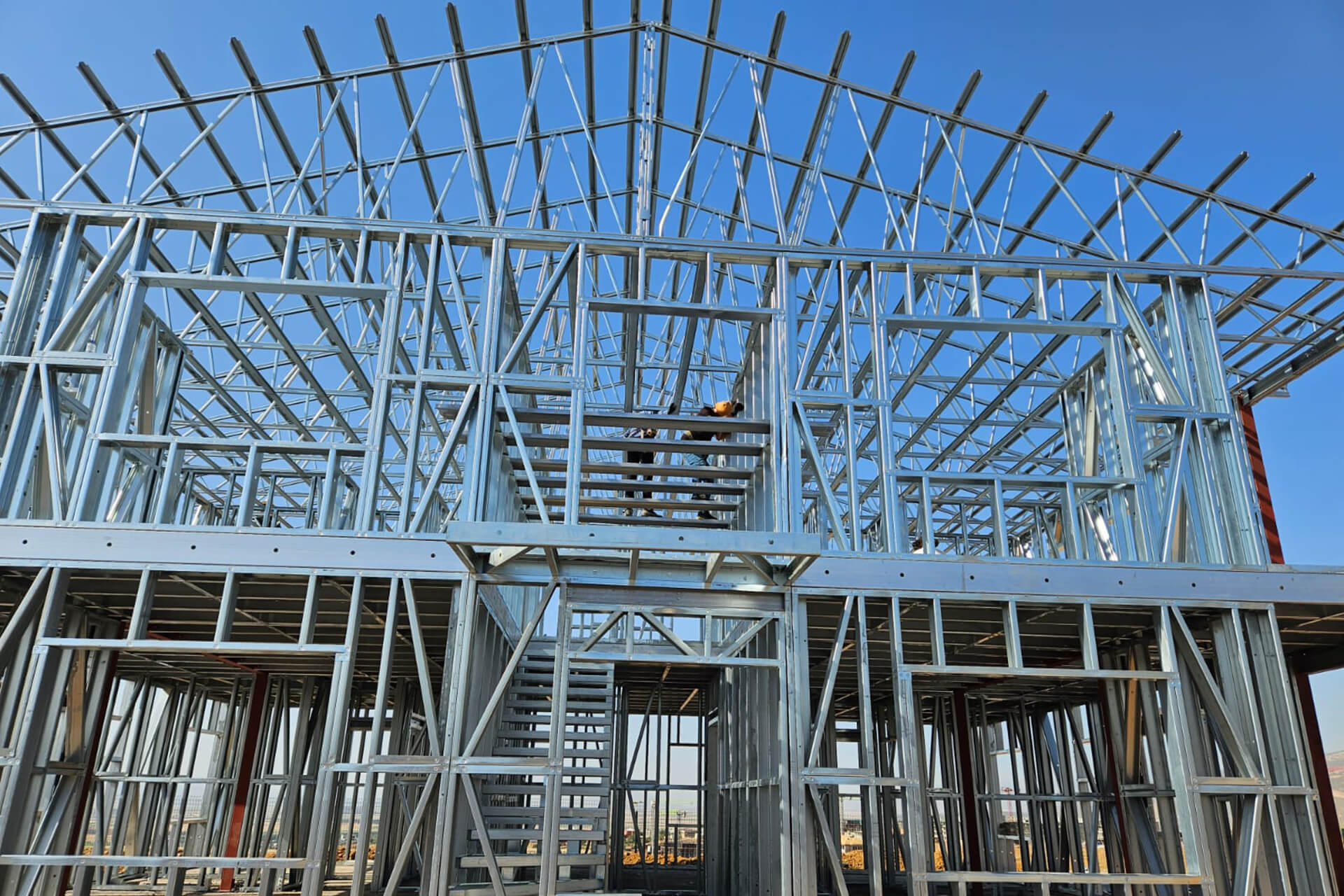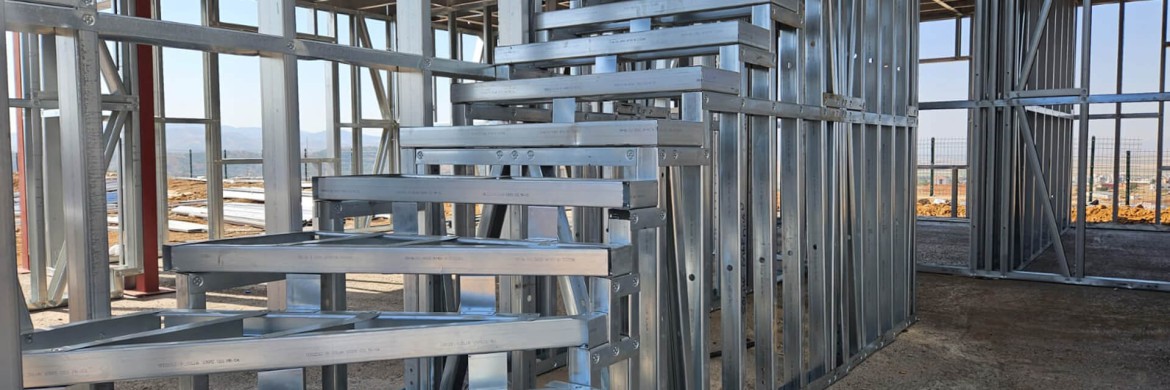What Is Cold-Formed Steel? Understanding Lightweight Structural Metal
Cold formed steel is a modern structural material that offers lightweight, high-strength solutions for a wide range of building applications. Increasingly used in both commercial and residential projects, cold formed steel profiles have become essential in creating efficient, sustainable, and cost-effective structures. In this article, we will explore what cold-formed steel is, how it is made, its properties, and why it is so widely used in today’s construction industry.

What Is Cold-Formed Steel?
Cold-formed steel refers to steel that is shaped at room temperature using processes such as rolling, pressing, or bending. Unlike hot-rolled steel, which is formed at high temperatures, cold-formed steel retains a smoother finish, more precise dimensions, and increased tensile strength due to the work-hardening effects of cold shaping. These advantages make cold formed steel profiles for construction particularly popular for use in wall studs, roof trusses, floor joists, and other structural applications.
Engineers and builders favor cold-formed steel because it provides strong yet lightweight framing options that can be fabricated into various cold formed steel sections. These sections are customized to fit specific building needs, contributing to faster installation and reduced on-site labor. Moreover, the uniformity of cold-formed products ensures consistency in performance and structural integrity across projects.

Difference Between Cold-Formed and Traditional Steel
One of the main differences between cold-formed and traditional steel lies in the manufacturing process. Traditional (hot-rolled) steel is processed at very high temperatures, which allows it to be shaped more easily but can result in uneven surfaces and slight dimensional inconsistencies. In contrast, cold-formed steel is shaped without heat, resulting in tighter tolerances and a cleaner, more refined finish.
Additionally, cold-formed steel offers better strength-to-weight ratios than hot-rolled steel, making it ideal for lightweight construction. This is especially valuable in the development of cold formed steel buildings, which benefit from reduced dead loads and easier handling during assembly. Its ability to be manufactured in long lengths also makes it more adaptable for modular and prefabricated structures.
How Is Cold-Formed Steel Manufactured?
The manufacturing process of cold-formed steel involves forming steel sheets or strips into desired shapes through a series of mechanical operations conducted at room temperature. The most common method is roll forming, where the steel passes through a sequence of rollers that gradually bend it into specific cold formed steel profiles. Because no heat is applied, the process is energy-efficient and ideal for producing long, uniform pieces with consistent quality.
In addition to roll forming, press braking is another technique used, especially for smaller production runs or custom parts. This method involves pressing steel with a punch and die to create precise angles or bends. Regardless of the method, the cold-forming process enhances the yield strength of steel by work hardening, allowing the final product to perform under higher structural loads despite its lighter weight.
Types of Equipment Used in Manufacturing
Cold-formed steel manufacturing relies on specialized equipment designed to maintain precision and efficiency. Roll forming machines are the backbone of large-scale production, capable of producing thousands of feet of uniform cold formed steel sections in a single day. These machines can be programmed to produce various profiles, making them highly versatile for different construction needs.
Other equipment includes press brakes for creating specific angles or customized pieces, shearing machines for cutting lengths to specification, and punching tools for introducing holes or slots as needed. CNC (computer numerical control) systems are often integrated to automate these processes, ensuring high accuracy and reducing human error. This advanced tooling not only streamlines production but also ensures that cold formed steel components meet strict quality standards required in structural applications.
What Are the Properties of Cold-Formed Steel?
Cold-formed steel is characterized by several properties that make it an exceptional material for structural applications. One of its primary attributes is its high strength-to-weight ratio. Because it is formed without the application of heat, the steel becomes work-hardened, which significantly increases its tensile strength. This allows engineers to design lighter structures without compromising on load-bearing capacity, making cold formed steel ideal for framing and support systems.
Another important property is dimensional precision. Cold-formed steel members are manufactured to tight tolerances, which ensures uniformity and predictability in structural performance. This consistency makes construction more efficient, as parts fit together accurately and require less adjustment on-site. Additionally, cold formed steel profiles are resistant to warping, twisting, and shrinkage—common issues associated with traditional wood framing.
Cold-formed steel is also corrosion-resistant, especially when galvanized or coated with protective finishes. This enhances its longevity and makes it suitable for use in various environmental conditions. Fire resistance is another benefit, as steel does not contribute to fire spread and maintains its integrity under high temperatures better than wood or plastic-based materials.
Where Is Cold-Formed Steel Commonly Used?
Cold-formed steel is widely used in both residential and commercial construction. In residential buildings, it is commonly applied in wall framing, floor joists, and roofing systems. Builders prefer cold formed steel profiles for construction because they are lightweight, easy to handle, and simplify the installation process. This not only reduces labor costs but also shortens project timelines.
In commercial and industrial settings, cold formed steel buildings are used for warehouses, retail centers, and office complexes. Due to its high structural integrity, cold-formed steel is particularly suitable for mid-rise and modular buildings. It also plays a key role in infrastructure projects such as bridges, transportation facilities, and communication towers.
Furthermore, cold-formed steel is often used in renovation projects. Its lightweight nature makes it ideal for retrofitting or reinforcing existing structures without significantly increasing load demands. This versatility, combined with its durability and strength, positions cold-formed steel as a leading material in modern architecture and engineering.
What Are the Benefits of Using Cold-Formed Steel?
The use of cold-formed steel in construction offers numerous advantages. First and foremost is its lightweight yet strong nature. This means structures can be built with less material without compromising safety or durability. This directly translates into reduced transportation and installation costs, as well as less labor-intensive assembly. The uniformity of cold formed steel sections also allows for precise engineering, reducing on-site modifications and delays.
Cold-formed steel is also environmentally friendly. It is 100% recyclable and often made from recycled materials, aligning with green building initiatives. Its resistance to pests, rot, and fire makes it a long-lasting material with low maintenance needs. Builders also appreciate the speed and ease of construction when working with cold formed steel profiles, especially in prefab and modular systems.
In addition, cold-formed steel can be used in regions with seismic activity or strong winds, thanks to its excellent structural performance and flexibility. Overall, it’s a material that combines durability, economy, and sustainability—essential attributes for modern construction practices.
How Does Cold-Formed Steel Compare to Hot-Rolled Steel?
While both cold-formed and hot-rolled steel serve important roles in construction, they differ in key aspects. Cold formed steel is produced at room temperature, giving it a smoother finish and more precise dimensions. It is better suited for applications that require tight tolerances and aesthetic appeal. In contrast, hot-rolled steel is formed at high temperatures, which allows for easier shaping but results in a rougher surface and less dimensional control.
In terms of strength, cold-formed steel is often stronger in tension and compression due to work hardening, whereas hot-rolled steel is typically more ductile and suitable for load-bearing columns and large structural frames. While cold formed steel profiles excel in lightweight framing and interior support systems, hot-rolled sections are used for heavy-duty construction.
Choosing between the two depends on the application. For fast, efficient, and cost-effective framing, cold formed steel profiles for construction are the preferred choice. For massive, high-load structures, hot-rolled steel still holds a place. Understanding these differences helps in selecting the right material for any specific project.

